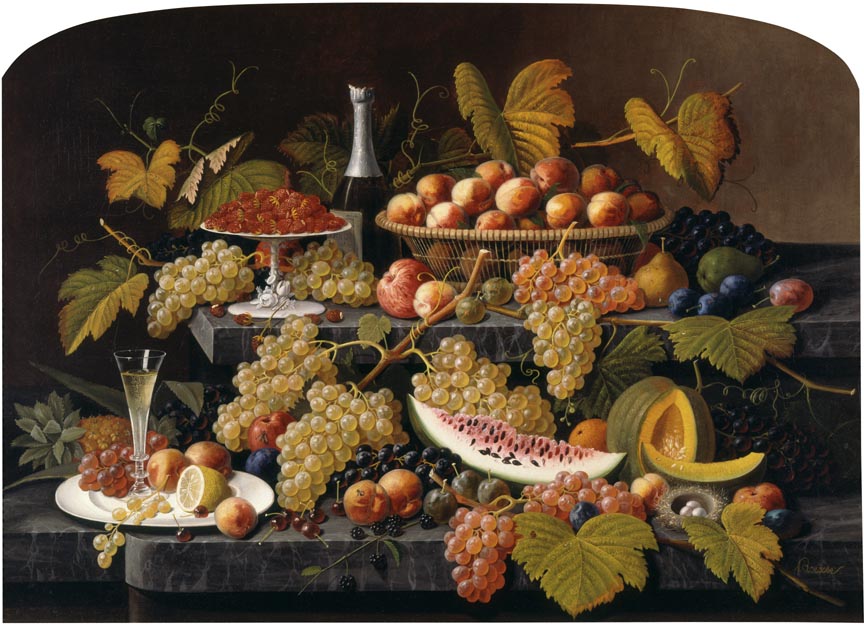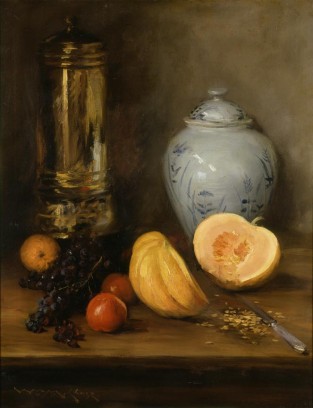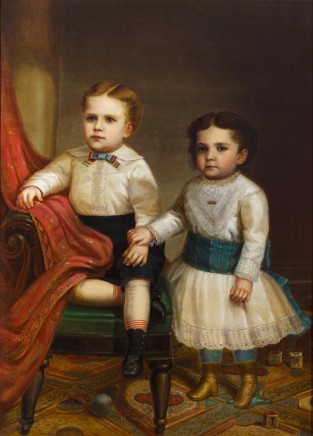Severin Roesen was America’s most celebrated still life painter in the middle of the 19th century. Born in Germany, Roesen likely began his career as a porcelain painter. By 1848, he had emigrated to the United States, where he established himself as a painter of elaborate fruit and flower studies.
In Abundance, Roesen tempts the viewer with a lavish display of fresh fruit, including several bunches of plump grapes, different melons, strawberries, peaches and apples along with a sparkling glass of bubbling champagne. Roesen’s lush painting is indebted to a rich tradition of European still life, which originated in the Netherlands in the 17th century, as well as illustrations in 19th-century botany books. While Roesen’s influences suggest a botanical accuracy to his work, he often took artistic license with his subject matter grouping together fruit and flowers from different growing seasons and often inventing hues for specific flowers to suit his color scheme.
Roesen’s elaborately detailed work may illustrate the writings of art critic John Ruskin and naturalist Charles Darwin. Although they wrote with different purposes, each author stressed the importance of the processes of growth and decay inherent in organic life forms. While Abundance reminds us of the transient nature of life through the bubbling champagne, insects and decaying watermelon, we are equally reminded of the origins of life. The seeds spilling from the cantaloupe and the bird’s nest filled with eggs are undoubtedly references to fertility. In the tradition of 17th-century Dutch still lifes, Abundance refers to the cyclical nature of life and death, while it celebrates American’s sense of prosperity at mid-century.




